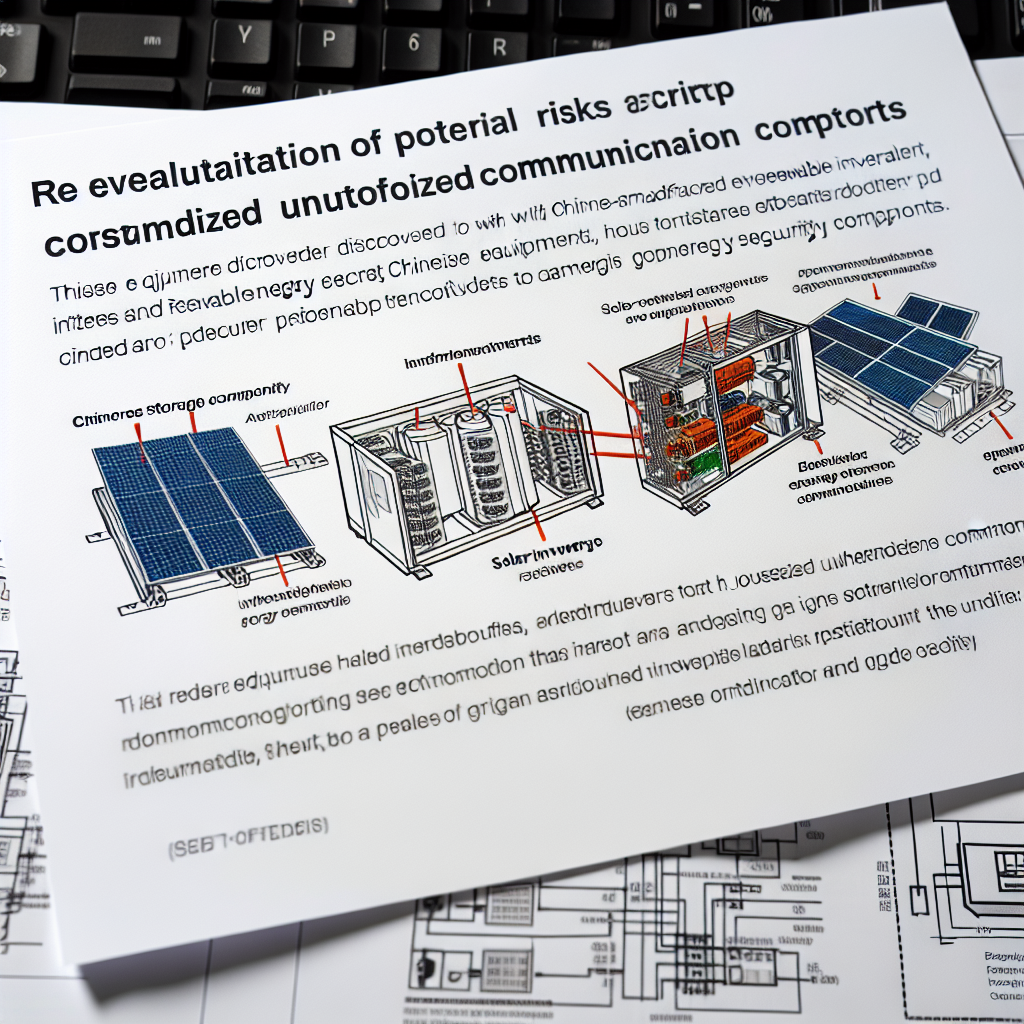According to two informed sources cited by Reuters, U.S. energy officials are reevaluating the potential risks of Chinese-made renewable energy equipment to grid security. Some Chinese-manufactured solar inverters and energy storage batteries were found to contain unauthorized communication components, posing potential threats to the stability and security of the grid.
Inverters play a crucial role in connecting solar panels, wind turbines, and the grid, and the majority of inverters worldwide are currently manufactured by mainland Chinese companies. This equipment is also widely used in energy storage systems, heat pumps, electric vehicle charging infrastructure, and various other fields.
While inverter designs allow for remote maintenance and updates, U.S. power companies typically deploy firewalls to prevent direct communication between devices and servers in mainland China. However, American experts discovered “ghost communication devices” in some Chinese-made inverters, including mobile communication modules, that were not listed in product documents.
These devices may bypass local firewalls, remotely control device settings, and thereby pose potential threats to the grid. Similar undisclosed communication devices have been found in energy storage batteries from multiple Chinese suppliers in the past nine months.
A source stated that if these devices were maliciously manipulated, it could lead to widespread power outages or damage to power facilities. Although there is currently no evidence showing that these modules have been used for cyberattacks, their mere presence poses inherent risks. The number of devices tested by the U.S. and the names of the Chinese suppliers involved have not been disclosed by the sources.
Despite the inability to confirm whether these devices are intentionally designed with malice, the U.S. Department of Energy (DOE) emphasizes that purchasers should fully understand all functions of the equipment and address information disclosure gaps through methods like Software Bill of Materials (SBOM).
As U.S.-China relations grow increasingly tense, Washington is conducting a comprehensive review of the role of Chinese suppliers in critical infrastructure. The U.S. Senate introduced the Foreign Adversary Battery Dependency Reduction Act in February of this year, planning to prohibit the Department of Homeland Security from procuring products from six Chinese battery manufacturers (including CATL, BYD, etc.) starting October 2027.
Simultaneously, many U.S. power companies are beginning to reduce their reliance on Chinese-made inverters. For example, Florida’s largest power provider, Florida Power & Light Company (FPL), is seeking alternative equipment from other countries.
The U.S. Department of Energy stated that it is actively working to establish domestic manufacturing capabilities, promote the integration of trusted devices into grid systems, and strengthen supply chain resilience.
Currently, over 200GW of solar capacity in Europe utilizes Chinese inverters, equivalent to the generating capacity of 200 nuclear power plants. Experts warn that if a large number of devices were remotely manipulated, it could have a significant impact on the European grid.
Huawei is the world’s largest inverter supplier, with a global market share of 29% in 2022, followed by Sungrow and Ginlong Technologies. However, German solar developer 1Komma5° stated that for security reasons, the company has completely ceased using Huawei inverters.
Countries like Lithuania and Estonia are also recognizing potential risks. Lithuania passed a law last year prohibiting remote access by China to renewable energy facilities exceeding 100kW. Estonia’s intelligence agency also warned that failure to restrict Chinese technology could lead to political coercion.
The UK government is currently conducting a comprehensive review of the application of Chinese technology in the energy system and is expected to release results within a few months.
NATO officials have issued warnings, pointing out that China’s attempts to control Western critical infrastructure are escalating, and urging countries to reduce their “strategic dependence” on Chinese technology.
However, compared to the telecommunications and semiconductor sectors, the energy industry appears to be lagging behind in addressing security risks. Particularly in small-scale residential solar and storage equipment, which are not currently part of the existing security review scope, but are gradually having a significant impact on the power supply structure.
In November of last year, a commercial dispute between U.S. inverter manufacturer Sol-Ark and Chinese DeYe Corporation led to some inverters being remotely shut down, highlighting the real risk of external control over power supply and triggering high-level concerns from the U.S. government. This event further prompted countries to re-examine China’s role in renewable energy technology.
With global demand for renewable energy continuing to rise, countries will face the challenge of balancing cost reduction with ensuring infrastructure security and technological independence.

